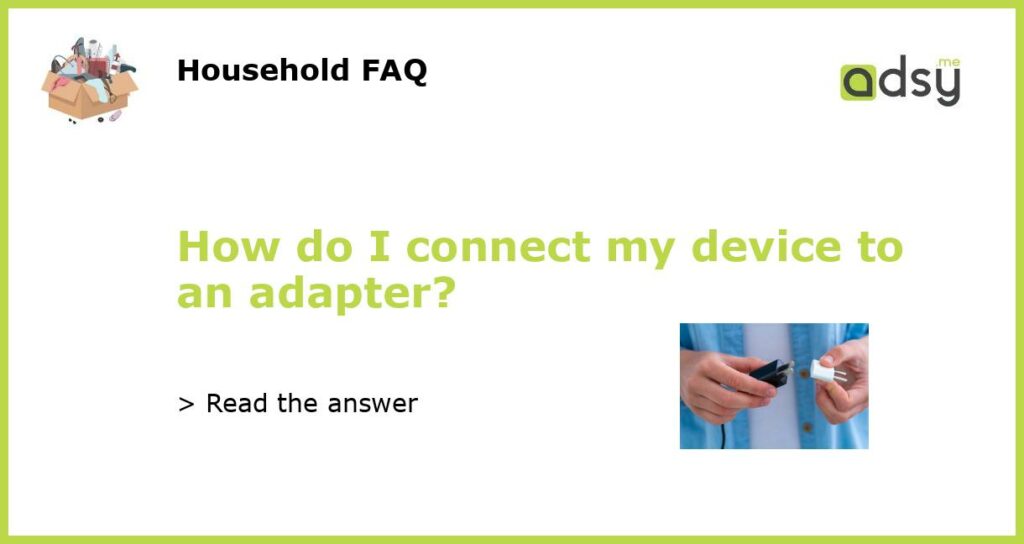Understanding Adapters and Devices
In order to connect your device to an adapter, it’s important to first understand what an adapter is and what type of device you’re trying to connect to it. An adapter is a device that is used to convert one type of electrical connection to another. Common adapters include those that convert from HDMI to VGA, USB-A to USB-C, or Lightning to 3.5mm. Your device may have a specific type of port, which will determine what type of adapter you need to use. Some devices may also require specific adapters that are designed specifically for that device.
Choosing the Right Adapter
Once you know what type of port your device has, you can begin the process of choosing the right adapter. It’s important to select an adapter that matches the specific port on your device. This may require some research, as there are many different types of adapters available. Some adapters may also have specific compatibility requirements, so it’s important to check the product specifications before making a purchase. Additionally, it’s important to select an adapter from a reputable manufacturer to ensure that it will work properly and safely with your device.
Connecting Your Device to the Adapter
Once you have your adapter, connecting your device to it is typically a straightforward process. First, ensure that your device is turned off. Next, plug the adapter into the appropriate port on your device. Then, connect the appropriate cable to the adapter. For example, if you’re using an HDMI to VGA adapter, you’ll need to connect an HDMI cable to the adapter, and then connect the other end of the HDMI cable to your display device. Once everything is connected, turn on your device and your display device, and ensure that the correct input is selected on the display device if necessary.
Troubleshooting Connection Issues
If you’re having trouble connecting your device to the adapter, there are several steps you can take to troubleshoot the issue. First, double-check that you’ve selected the correct adapter for your device and that both devices are turned off before you begin connecting them. If your device still isn’t connecting after following these steps, try restarting both your device and your display device. You can also try using a different cable or a different input on your display device. Finally, if you’re still having trouble, check to ensure that your adapter is compatible with your specific device, as some adapters may only work with certain models or operating systems.
Connecting your device to an adapter is a relatively simple process, but it’s important to select the correct adapter for your device and to follow the proper steps for connecting them. By understanding the different types of adapters available and the requirements of your specific device, you can ensure a successful connection and avoid potential compatibility issues. If you do run into problems, troubleshooting steps can often resolve the issue and get you up and running quickly.






